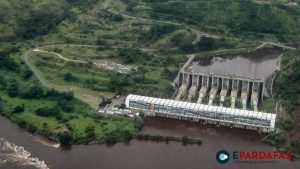
From Bridges to Walls: Understanding China’s Border “Wall” Project Along Nepal’s Frontier
The China-Nepal border stretches across 1,389 kilometers, separating the Tibet Autonomous Region from Nepal along some of the world’s most remote and rugged terrains. Historically, this border has been a conduit for the exchange of people, trade, and culture, with multiple mountain passes connecting the two regions. However, a new development is casting a shadow on this long-standing relationship—China has begun constructing a “wall” along the Tibet-Nepal border, a project involving barbed wire and concrete barriers. This move places Nepal, a landlocked country, in a challenging situation, as it seeks to enhance trade routes with its northern neighbor, not build walls. In this article, we delve into the historical dynamics between Tibet and Nepal, the impact of China’s annexation of Tibet, and how the new wall could alter life along the border.
For centuries, Nepal has maintained close ties with Tibet, dating back to at least the seventh century. Buddhism played a pivotal role in fostering cultural exchanges, while trade routes across the Himalayas facilitated commerce. Much of the trade involved goods flowing between India and Tibet, with Kathmandu serving as a key trading hub. Nepal historically sought to control trade through key mountain passes, such as Kerong (Kyirong) and Kuti (Nyilam), which provided access to Tibet.
Nepal was once viewed as a bridge between Tibet and the outside world. However, this changed following the Sino-Nepalese War (1788-1792) when Tibet, seeking help from the Qing Dynasty, brought China into the equation. As a result, Chinese influence over Tibet grew, with long-term consequences for Nepal’s sovereignty and stability. Despite these geopolitical shifts, Nepal and Tibet maintained trade and cultural ties, even after China invaded Tibet in 1950 and brought it under the control of the People’s Republic of China.
China’s annexation of Tibet marked the beginning of the region’s isolation, a situation that continues to this day. As China’s economic and military power has grown, so has its desire to secure its borders. One area feeling the impact of this is Humla, a remote district in northwestern Nepal that shares a border with Tibet. Humla is home to ethnic groups with deep-rooted connections to Tibet, and cross-border trade and cultural exchanges have been a way of life for generations. However, China’s construction of a border wall in the district, which reportedly began in the early 2020s, has raised concerns about border encroachment and territorial disputes.
Chinese officials have stated that the wall is necessary to curb illegal border crossings and enhance security in Tibet. However, local Nepali officials and residents in Humla have voiced strong opposition. They argue that the wall encroaches on Nepalese territory and disrupts traditional trade routes and religious pilgrimages. Satellite images and reports from local sources suggest that the wall may have taken over some of Nepal’s traditional lands. Humla residents and local leaders also claim that China has unilaterally shifted the border without consulting Nepal, further heightening tensions.
Another concern for the Nepalese government is the treatment of ethnic Tibetans living in Nepal’s border regions. Reports have surfaced of Chinese PLA forces harassing these communities, particularly for their reverence of the Dalai Lama, a figure that China views as politically sensitive. This has added another layer of tension between the two countries.
Despite these issues, the lack of a clear demarcation between Tibet and Nepal remains a significant challenge. Local leaders and news reports continue to raise concerns about Chinese encroachment, but little action has been taken at the national level. High-level politics in Kathmandu often seems disconnected from the realities on the ground in remote border districts like Humla. Yet, the construction of this wall—by a country that claims to be one of Nepal’s closest allies—raises serious questions about the nature of their relationship.
On the high Himalayan plateau, where much of the border remains loosely defined, it is difficult to ascertain the exact situation on the ground. However, Nepal’s government must take local reports and satellite evidence seriously and engage China in dialogue to address these concerns. The stakes are high, and the construction of a wall along this historically open border could have long-lasting consequences for the people who live there and for Nepal’s broader relationship with China.
Harsh Pandey is a PhD Candidate at the School of International Studies, Jawaharlal Nehru University.













Comments